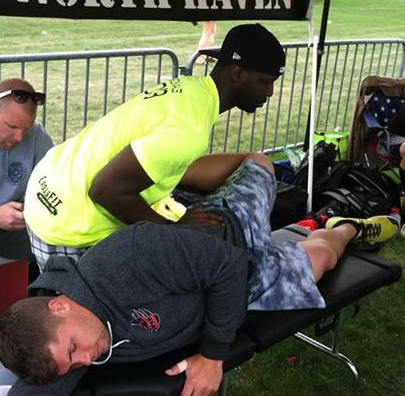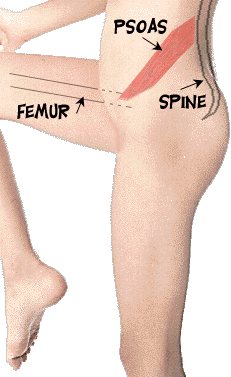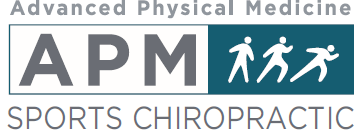The staff was friendly and easy to work with. If you’re having any pain or discomfort, I would recommend to give them a visit.
patient
I can’t say enough good things about APM! Dr. Max worked with me for months to get rid of my plantar fasciitis pain – I didn’t want to turn to cortisone like I did in the past. With his help in office and with his suggestions of exercises to do at home, my pain is gone without injections or even a daily brace! Love how easy booking appointments online is, too!
I go once a month for routine maintenance on my neck and back and I feel great. The adjustments have kept me from locking up. Dr. Max is very knowledgeable and professional. I highly recommend.
They’re great at this place. On top of the top notch chiropractic and acupuncture care I’ve received here, everyone that works here is friendly and wonderful and will do everything they can to help even if it’s something like listening to you complain about a bad day. Which I’m fairly certain is not in their job descriptions. Highly recommended.
This is an awesome practice. You can always get an appointment, and you always leave feeling well taken care of and physically better.
Dr. Max Mitchell is the greatest guy (to be fair, I haven’t met the other doctor, who is well thought of too). Dr. Max is personable, knowledgeable, and kind. He spends a good amount of time talking with you first to make sure he understands your injury or condition as well as your activities.
He also spends a good amount of time with hands-on physical therapy and chiro. I have been to other PTs who make the patient do all of the work, basically telling you to do this exercise and that. Dr. Max actually treats you, hands on, and also explains how you can continue to get well and stay well through appropriate activities.
Give APM a try. You will have a new go-to place for physical therapy and chiro treatment.
I injured my shoulder and biceps tendon and was experiencing significant pain throughout all hours of the day/night. APM’s Chiropractors suggested I receive laser treatment to aide in healing. I couldn’t believe that within my first treatment I had a significant decrease in my pain and discomfort.
I came to APM after injuring my shoulder working out. Dr. Max did an incredible job assessing my injury and creating a plan to get me back in the game. Within about a month, my shoulder was feeling much better and I’ve had no problems since. I especially thought the laser therapy was helpful. I would recommend anyone who is having pain to visit APM and get checked out. It really worked for me. Thanks again!
What is sports chiropractic? How is this niche helping athletes of all ages recover?
 This is part 1 of a 2 part blog series on sports chiropractic and why its popularity is booming. Sports chiropractic has been around for quite some time, but has recently exploded due to increased media attention. Professional athletes and professional teams have realized the benefits of having a sports chiropractor as part of their medical team, all 32 NFL teams have at least one on staff. These teams and athletes know how important it is for them to perform at their best optimal level.
This is part 1 of a 2 part blog series on sports chiropractic and why its popularity is booming. Sports chiropractic has been around for quite some time, but has recently exploded due to increased media attention. Professional athletes and professional teams have realized the benefits of having a sports chiropractor as part of their medical team, all 32 NFL teams have at least one on staff. These teams and athletes know how important it is for them to perform at their best optimal level.
Micheal Jordan was quoted saying “I didn’t know how much I could improve until I started seeing a chiropractor. Since I’ve been in chiropractic, I’ve improved by leaps and bounds, both mentally and physically.” Tom Brady also said “Just over the course of the season, your body takes quite a beating. Every week, it’s about how fast you can recover and whether you can be up to full speed at practice on Wednesday after a game on Sunday. [Chiropractic] just makes you feel so much better,” he adds. “When I walk out of [the clinic], I feel like I’m about three inches taller and everything’s in place. And as long as I see the chiropractor, I feel like I’m one step ahead of the game.”
So what are sports chiropractors doing to help these athletes recover, whether that recovery be from an injury or post-workout/game? Chiropractic has come a long way from just doing x-rays and adjusting joints. Sports chiropractors are incorporating movement screen analyses, massage, stretching, kinesiotape and rehab exercises along with adjustments. Treatment isn’t just directed to the spine either, many people think of chiropractors as only “back or neck doctors,” which is not true. Sports chiropractors treat the neuro-musculoskeletal system, which includes all muscles, joints and nerves in the body. This means that the nagging shoulder pain, hip pain or shin splints you’ve been experiencing would benefit from chiropractic care. Dr. Lindsey Mathews recently posted a great article on how mobility and recovery treatments are the missing link for many CrossFit athletes.
 27 muscles cross the hip, no wonder why it is sometimes difficult to diagnose where pain and/or dysfunction are coming from. These 27 muscles need to fire in perfect harmony for the hip to have proper motion, leading you to perform at your highest level. Any dysfunction on the muscular level or joint level can hinder your power and performance. The hip joint is where the thigh bone (femur) joins the pelvis. This joint is an integrated system of muscle, joint and bone which makes it a very sturdy joint. If for some reason you feel a sudden pop or the onset of severe pain, it is better to see a doctor sooner than later due to the possibility of a tear.
27 muscles cross the hip, no wonder why it is sometimes difficult to diagnose where pain and/or dysfunction are coming from. These 27 muscles need to fire in perfect harmony for the hip to have proper motion, leading you to perform at your highest level. Any dysfunction on the muscular level or joint level can hinder your power and performance. The hip joint is where the thigh bone (femur) joins the pelvis. This joint is an integrated system of muscle, joint and bone which makes it a very sturdy joint. If for some reason you feel a sudden pop or the onset of severe pain, it is better to see a doctor sooner than later due to the possibility of a tear.
The iliopsoas (psoas) and rectus femoris muscles are two hip joint muscles that are commonly treated at Advanced Physical Medicine. Low back pain, groin pain or the sensation of hip weakness can all be attributed to tightening of these muscles. The fact is most of us have tight psoas muscles. This is due to our way of life, most of us spend the majority of the day sitting. Whether it be at a desk or in a car, sitting causes the psoas muscle to shorten. Let’s go over some quick anatomy of this muscle, the iliopsoas is actually made up of three muscles that merge: the psoas major and minor and iliacus. The psoas major starts in the lower third of the spine and runs in front of the spine to inside the top of the thigh bone (femur) in the groin area. As you can see in the picture, the psoas becomes more horizontal versus vertical while sitting, meaning it has shortened from it’s natural length. So next time you sit see how this muscle can become chronically short, especially if you hop right into the car following a workout. The rectus femoris is the muscle that gives definition to the front of the thigh. It starts from your hip bone (ASIS) and attaches down into your knee cap (patella).
